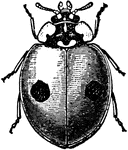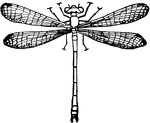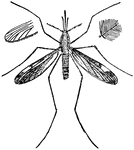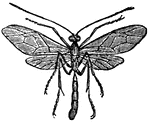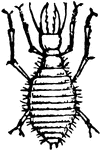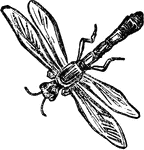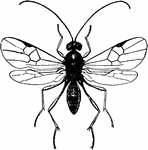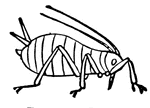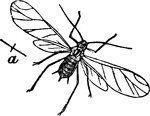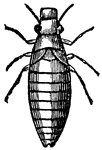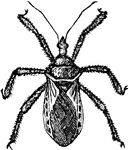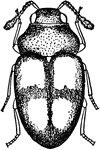This gallery includes 949 illustrations of other orders of insects.

Siro Americanus
"The typical genus of Sironidae. Two species inhabit Europe, one the Philippines, and another (undescribed)…
Acerentomon
"Acerentomon, a very primitive insect. H, Head; TH.1, TH.2, TH.3, terga of thoracic segments; 1, 2,…
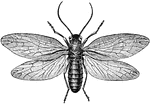
Alderfly
The Alderfly (Sialis infumata) is an insect in the Megaloptera order of alderflies, dobsonflies, and…

Ant Lion (Myrmeleo Formicarius)
"Ant-lions diffuse an odor of roses. Their flight, which is weak, distinguishes them from the dragon-fly."

Species of Pimpla
"It also belongs to the family which manages to place its eggs under the skin of other insects."

Antlion
"A very beautiful species of the ant-lion is to be found in the climate which characterizes the south…
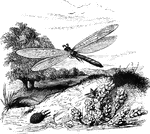
Antlion and Larva
"In some species the larvae, which are small, sluggish, oval-shaped creatures, and furnished with a…
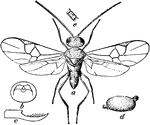
Apanteles aletiæ
"Apanteles aletiæ, much enlarged. ITs species infest various lepidpterous larvæ, and form…

Aphid
Numerous species of aphids, or plant lice, are known, and they are among the greatest pests of the gardener…

Aphid
Aphids, also known as plant lice, are small plant-eating insects, and members of the superfamily Aphidoidea.…

Hop Aphid (Female)
An illustration of a female hop aphid. Aphids, also known as plant lice (and in Britain as greenflies),…
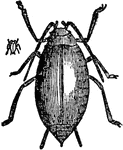
Hop Aphid (Larva)
An illustration a hop aphid in larval form. Aphids, also known as plant lice (and in Britain as greenflies),…

Adult Woolly Aphid
The winged female woolly aphid (Schizoneura lanigera), a species of plant lice of the Eriostoma family.

Woolly Aphid Larva
The female woolly aphid larva (Schizoneura lanigera), a species of plant lice of the Eriostoma family.

Wooly Aphid
Eriosoma Lanigera, or the Wooly Apple-Tree Blight. These insects appropriate for their generic name…

Wooly Aphid
Eriosoma Imbricata. Found very abundantly on birch in Maryland in October. These insects cluster together…

Wooly Aphid
Eriosoma Tesselata was found on birch in Maryland, in clusters near the ends of twigs, in the autumn.…
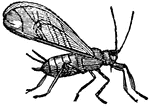
Winged Aphides, or Plant Lice
"They subsist on the sap of the tree; and are sometimes provided with wings, and are sometimes without."

Winged Aphides, or Plant Lice
"They subsist on the sap of the tree; and are sometimes provided with wings, and are sometimes without."

Wingless Aphides, or Plant Lice
"They subsist on the sap of the tree; and are sometimes provided with wings, and are sometimes without."
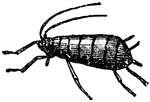
Wingless Aphides, or Plant Lice
"They subsist on the sap of the tree; and are sometimes provided with wings, and are sometimes without."
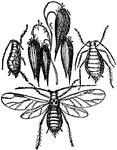
Aphis Avence
Grain or oat-plant louse, does much injury to grain, and especially to oats, but is also found on wheat,…
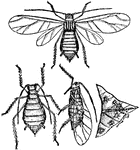
Aphis Gossypii
Also known as the Cotton-plant louse, is a great nuisance to the planters, especially when the plants…

Hickory Aphis
A large aphis is found in clusters on the under side of limbs of hickory, oak, and basswood and walnut,…

Apple-Tree Borer
Illustrated are the burrows of an apple-tree borer. The holes at (a) shows where the adult beetle emerged.

Asilus Crabroniformis
"This species is common over the whole of Europe, and lives at the expense of caterpillars and other…
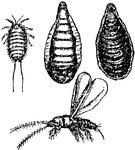
Aspidiotus Citricola
Scale-insect, was found on imported lemons in Jacksonville, Fla. This insect is said to be allied to…

Assassin Bug
Ectrichodia cruciata is a species of assassin bugs in the Hemiptera order of true bugs.


